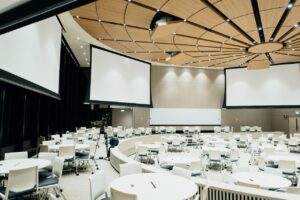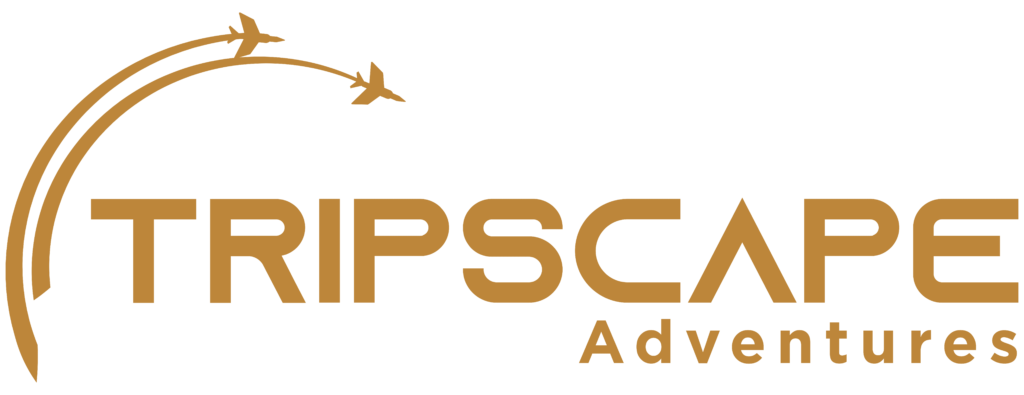Conferences & Events (MICE): Bringing People Together for Meaningful Experiences
MICE Conferences Events play a pivotal role in today’s business landscape. They provide a platform for professionals from various industries to gather, exchange knowledge, and establish valuable connections. The Meetings, Incentives, Conferences, and Exhibitions (MICE) industry encompasses a wide range of activities that bring people together for both business and leisure purposes. In this article, we will explore the significance of conferences and events, their impact on industries, and how they contribute to economic growth.
Table of Contents
- Introduction: The Power of Conferences & Events
- Benefits of Conferences & Events
- Facilitating Networking Opportunities
- Sharing Knowledge and Best Practices
- Showcasing Innovations and Technologies
- Types of Conferences & Events
- Professional Conferences
- Trade Shows and Exhibitions
- Corporate Events and Incentive Programs
- Academic Conferences
- Planning and Execution of Successful Conferences & Events
- Identifying Objectives and Target Audience
- Choosing the Right Venue and Logistics
- Creating Engaging Content and Program
- Marketing and Promotion
- On-site Management and Experience
- The Economic Impact of Conferences & Events
- Boosting Local Businesses and Tourism
- Generating Employment Opportunities
- Driving Innovation and Investment
- Sustainability and Social Responsibility in the MICE Conferences Events
- Green Initiatives and Carbon Footprint Reduction
- Supporting Local Communities and Charitable Causes
- Challenges and Future Trends in Conferences & Events
- Adapting to Virtual and Hybrid Formats
- Enhancing Attendee Experience with Technology
- Ensuring Safety and Security Measures
- Conclusion
- FAQs (Frequently Asked Questions)
- How can I make my conference stand out from the rest?
- What are some emerging trends in event technology?
- How do conferences contribute to professional development?
- How can event organizers ensure inclusivity and diversity?
- Are virtual conferences here to stay?
-
Introduction: The Power of MICE Conferences Events
Conferences and events bring people together, fostering collaboration, innovation, and growth across industries. Whether it’s a large-scale international conference or a small local gathering, these gatherings provide a platform for professionals to connect, learn, and share ideas. Conferences and events create a vibrant ecosystem where businesses, academics, and industry experts can thrive.
-
Benefits of MICE Conferences Events
Facilitating Networking Opportunities
One of the key advantages of conferences and events is the opportunity to network with like-minded individuals. Moreover, these gatherings attract professionals from diverse backgrounds who are eager to establish new connections, partnerships, and collaborations. Additionally, networking at conferences can lead to valuable business opportunities, career advancements, and lifelong relationships.
Sharing Knowledge and Best Practices
Conferences and events serve as knowledge-sharing platforms where industry leaders and experts share their insights, experiences, and best practices. Additionally, attendees can benefit from keynote speeches, panel discussions, workshops, and presentations that cover a wide range of topics. Moreover, by exchanging knowledge, participants can gain fresh perspectives, expand their skill sets, and stay up-to-date with the latest industry trends.
Showcasing Innovations and Technologies
Conferences and events often feature exhibitions and showcases where companies and organizations can display their innovations, products, and services. Moreover, this enables attendees to explore new technologies, engage with cutting-edge solutions, and identify opportunities for collaboration or investment. Additionally, exhibitions provide a dynamic environment for businesses to gain visibility, attract customers, and secure partnerships.
-
Types of MICE Conferences Events
The MICE Conferences Events encompasses various types of conferences and events tailored to specific purposes and target audiences. Some common categories include:
Professional Conferences
Professional conferences focus on specific industries or professions, bringing together experts, practitioners, and enthusiasts. Moreover, these conferences provide a platform for attendees to discuss industry trends, advancements, and challenges. Additionally, examples include medical conferences, technology summits, and marketing forums.
Trade Shows and Exhibitions
Trade shows and exhibitions are events where companies showcase their products, services, and innovations to a wide audience. Additionally, these events allow businesses to generate leads, network with potential clients, and gain market insights. Moreover, trade shows often feature interactive exhibits, demonstrations, and product launches.
Corporate Events and Incentive Programs
Corporate events, such as company retreats, team-building activities, and incentive programs, aim to motivate and reward employees. These events enhance team dynamics, boost morale, and foster a sense of belonging within the organization. Corporate events can range from small-scale gatherings to large-scale conferences.
Academic Conferences
Academic conferences provide a platform for scholars, researchers, and students to present their work, exchange ideas, and collaborate on research projects. Moreover, these conferences facilitate intellectual discussions, promote interdisciplinary research, and contribute to the advancement of knowledge in various fields.
-
Planning and Execution of Successful MICE Conferences Events
The success of a conference or event depends on careful planning and execution. Here are some key steps to consider:
Identifying Objectives and Target Audience
Before organizing an event, it is crucial to define the objectives and identify the target audience. Clear objectives help in designing a program that meets the attendees’ needs and expectations. Understanding the target audience enables event organizers to tailor the content, format, and activities accordingly.
Choosing the Right Venue and Logistics
Selecting an appropriate venue is essential for creating the right ambiance and accommodating the expected number of attendees. Factors such as location, accessibility, facilities, and cost should be taken into consideration. Additionally, logistics such as registration, accommodations, transportation, and catering must be carefully planned.
Creating Engaging Content and Program
The content and program of a conference or event should be engaging, informative, and relevant to the target audience. Additionally, keynote speakers, panel discussions, workshops, and interactive sessions can enhance the attendee experience. Moreover, incorporating a variety of formats and topics ensures that participants have a diverse range of learning opportunities.
Marketing and Promotion
Effective marketing and promotion are crucial to attract attendees and create awareness about the conference or event. Moreover, utilizing digital marketing strategies, social media platforms, email campaigns, and targeted advertisements can help reach the desired audience. Engaging with potential participants through engaging content and networking opportunities can also boost attendance.
On-site Management and Experience
During the conference or event, efficient on-site management is essential for ensuring a smooth and memorable experience for attendees. Clear communication, well-trained staff, and appropriate signage contribute to the overall satisfaction of participants. Engaging activities, networking breaks, and social events further enhance the overall experience.
-
The Economic Impact of Conferences & Events

Conferences and events have a significant economic impact on both local and global scales. Here are a few ways in which they contribute to the growth of the economy:
Boosting Local Businesses and Tourism
Hosting conferences and events brings in a substantial number of visitors, which directly benefits local businesses such as hotels, restaurants, transportation services, and entertainment venues. Increased tourism revenue stimulates the local economy and supports job creation in various sectors.
Generating Employment Opportunities
The MICE Conferences Events creates employment opportunities not only within the event management sector but also in related industries. Event planning, logistics, hospitality, marketing, and technology services all contribute to job growth. The demand for skilled professionals in these fields continues to rise as the industry expands.
Driving Innovation and Investment
Conferences and events often serve as catalysts for innovation and investment. By bringing together industry leaders, researchers, and entrepreneurs, these gatherings create an environment conducive to the exchange of ideas and the formation of partnerships. As a result, new collaborations, business ventures, and technological advancements emerge.
-
Sustainability and Social Responsibility in the MICE Industry
As the awareness of environmental and social issues grows, the MICE Conferences Events has embraced sustainability and social responsibility initiatives. Some key practices include:
Green Initiatives and Carbon Footprint Reduction
Event organizers are increasingly adopting sustainable practices to minimize their carbon footprint. Additionally, this includes reducing energy consumption, recycling waste, promoting paperless communication, and offsetting carbon emissions through initiatives like tree planting or renewable energy projects.
Supporting Local Communities and Charitable Causes
The MICE Conferences Events recognizes the importance of giving back to the communities where events are hosted. Moreover, organizers often engage in partnerships with local charities, support community projects, or allocate a portion of event proceeds to social causes. Additionally, this approach ensures that conferences and events have a positive and lasting impact beyond their immediate scope.
-
Challenges and Future Trends in Conferences & Events
As conferences and events evolve, new challenges and trends emerge. Here are some noteworthy ones:
Adapting to Virtual and Hybrid Formats
The COVID-19 pandemic accelerated the adoption of virtual and hybrid conference formats. Even as in-person events resume, these formats are likely to continue as they offer flexibility, accessibility, and cost-effectiveness. Event organizers must navigate the complexities of delivering engaging experiences in both physical and virtual settings.
Enhancing Attendee Experience with Technology
Technology plays a vital role in enhancing the attendee experience. Mobile event apps, virtual networking platforms, live polling, and interactive technologies create opportunities for personalized engagement and real-time feedback. The integration of augmented reality (AR), virtual reality (VR), and artificial intelligence (AI) further revolutionizes the way conferences and events are conducted.
Ensuring Safety and Security Measures
The safety and security of attendees remain a top priority for event organizers. Furthermore, robust risk management plans, emergency response protocols, and health and hygiene measures are essential for creating a secure environment. Additionally, the ongoing monitoring of global events and adherence to local regulations help ensure participant safety.
-
Conclusion
Conferences and events have become an integral part of today’s business landscape. Moreover, they foster collaboration, knowledge-sharing, and economic growth across industries. Additionally, by providing platforms for networking, learning, and showcasing innovations, conferences and events enable professionals to stay ahead of the curve. Furthermore, as the MICE industry continues to evolve, embracing sustainability, technology, and inclusivity will be vital for its long-term success.
FAQs (Frequently Asked Questions)
How can I make my conference stand out from the rest?
To make your conference stand out, focus on delivering unique and valuable experiences to attendees. Consider incorporating interactive sessions, expert speakers, hands-on workshops, and opportunities for networking and collaboration. Additionally, leverage technology to enhance engagement, offer personalized content and create a memorable event.
What are some emerging trends in event technology?
Emerging trends in event technology include virtual and hybrid event formats. Additionally, there are mobile apps for personalized experiences, live polling, and interactive tools. Moreover, augmented reality (AR) and virtual reality (VR) experiences, along with artificial intelligence (AI), are being utilized for attendee engagement and data analysis.
How do conferences contribute to professional development?
Conferences provide a platform for professionals to expand their knowledge, learn from industry experts, and gain insights into the latest trends and best practices. Moreover, by attending sessions, workshops, and networking events, participants can enhance their skills, broaden their perspectives, and establish valuable connections that contribute to their professional development.
How can event organizers ensure inclusivity and diversity?
Event organizers can ensure inclusivity and diversity by promoting diversity in speaker lineups. Additionally, they can select diverse panels and workshop leaders, providing accessible venues and accommodations. Moreover, offering translation services and incorporating inclusive practices in all aspects of the event planning process are essential steps in achieving inclusivity and diversity. Engaging with diverse communities and seeking feedback from attendees can also help in creating inclusive experiences.
Are virtual conferences here to stay?
Virtual conferences have gained significant popularity and are likely to remain an integral part of the events landscape even as in-person gatherings resume. Additionally, virtual conferences offer increased accessibility, reduced costs, and the ability to reach a global audience. However, a hybrid approach that combines both physical and virtual elements is expected to be the future of conferences, offering flexibility and wider participation options.
In conclusion, conferences and events in the MICE Conferences Events bring people together for meaningful experiences. They facilitate networking, knowledge-sharing, and innovation, thereby contributing to the growth of industries and local economies. Moreover, by embracing sustainability, technology, and inclusivity, the MICE industry can continue to thrive and deliver impactful gatherings that shape the future of business and society.

